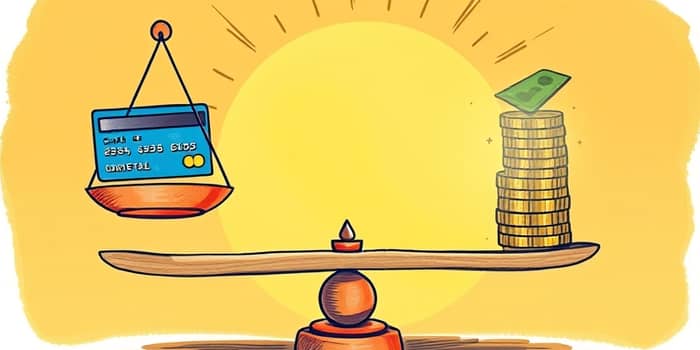
Managing credit wisely can unlock opportunities and protect your financial health. Understanding key concepts around your limit, utilization, and strategies will empower you to navigate credit responsibly and avoid costly mistakes.
A credit limit is the maximum amount of credit a lender authorizes you to borrow on a credit card, line of credit, or similar account. Once you reach this threshold, the account is considered maxed out and further purchases may be denied or incur fees.
Exceeding this cap can lead to declined transactions or penalty charges. It is vital to track your balance and understand how much remains available.
Financial institutions assess several factors before setting your limit. They aim to ensure you can manage borrowed funds responsibly.
Business credit limit decisions also factor in cash flow projections and payment guarantees, ensuring companies do not overextend their borrowing capacity.
Your credit limit is static until the lender changes it, while your available credit fluctuates. Available credit equals your limit minus your current balance and fees, including any authorizations pending settlement.
Monitoring this figure helps you stay below thresholds and avoid unintentional over-limit spending.
When you exceed your credit limit, multiple consequences may arise:
Repeated overages signal risk to lenders, making future borrowing more difficult or expensive.
Credit utilization—the ratio of your balance to your credit limit—accounts for 20–30% of many scoring models. Maintaining a healthy ratio demonstrates responsible credit management.
Experts recommend keeping utilization under 30%, with under 25% considered ideal. High utilization can erode your credit standing, while consistently low balances can increase your borrowing potential over time.
Adopting thoughtful credit habits will help you avoid debt traps and strengthen your financial profile. Consider these approaches:
By integrating these habits, you can lower utilization ratio over time and signal fiscal responsibility to lenders.
Lenders may adjust your credit limit without notice due to market shifts or changes in your financial profile. Stay prepared for both increases and reductions by maintaining an emergency fund and monitoring your credit report.
For entrepreneurs, business credit limits help balance cash flow and purchasing power with suppliers. A healthy limit allows you to negotiate better terms and manage expenses seamlessly.
When limits no longer align with your needs, responsible limit use signals positive behavior—contact your lender for a review, but anticipate updated documentation and potential inquiries.
Your credit limit is more than just a borrowing cap; it’s a tool that, when managed wisely, can unlock financial freedom and reinforce your creditworthiness. Understanding the factors behind your limit, the impact of utilization, and the strategies to stay within safe thresholds will empower you to control your debt, avoid unexpected fees, and build a resilient credit profile.
By embracing disciplined monitoring, timely payments, and strategic limit requests, you can transform your credit limit from a potential risk into a powerful asset for long-term financial success.
References













